 Synergy is when two efforts or effects combine to create a whole greater than the sum of its parts. In marketing, this happens most often when you use multiple channels to deliver the same message. Done right, it can create a feedback loop of publicity far greater than what two media modes would have accomplished individually.
Facebook (Social Media Marketing) and SMS Marketing are two modes born to create this kind of synergy, since they serve similar audiences and thrive with the same kind of short-form message. Keep a few things in mind to maximize the benefits for both your campaigns.
Don’t rebroadcast the same message on both channels. This mistake will lead subscribers to believe they only need to subscribe to one channel. Instead, put unique content on both.
Do tease content between channels. For example, you can put a promotional video on your Facebook feed, and then send an SMS broadcast with a link. Be sure to go both directions, so you harvest subscribers from both bases.
Don’t only broadcast advertising. This might be tempting since you’re putting out more effort on both fronts, but customers are more likely to unsubscribe from advertising-only channels. Make sure you include funny, informative and topical posts along with your shameless self-promotion. Otherwise, those who follow you on both channels with get bored twice as fast.
Do hold cross-platform contests. Send an SMS coupon to people who participate in a Facebook contest, or hold a text message poll to decide on a detail of your Facebook page design. The more involvement you get between both forms, the better.
Don’t stop at just the two modes. Include a link to your Facebook page and your SMS call to action on your website, in your print advertising, and on all of your takeaway collateral. The problem with focusing on Facebook and SMS is that the communities are aware of each other. Reaching out to more traditional media will bring in even more fresh faces.
Do check your Facebook and web presence on mobile devices before you go live with anything. Linking from an SMS broadcast means people will look at your Facebook posts on a phone. They need to like what they see.
Readers, do you have any experience here as a marketer or as a consumer? Tell us about it in the comments below. What’s the worst, or the best, thing you’ve seen along these lines?
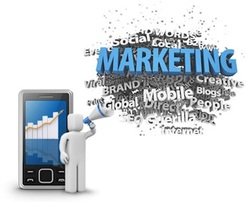 Searching the web for advice having to do with mobile marketing has not proved to be fruitful up to this point. There might be plenty of content out there, but nothing you can make use of. Give this article a try and you will be happy that you did.
Let customers give you feedback. Some mobile marketers have outgoing only messaging, meaning that a customer cannot text them back without going through a lot of hassle. Let your customers talk back to you to improve the focus of your plan, and know if you may need to do something differently.
Maintain your program. There is nothing more disappointing for a customer than to sign up for a mobile marketing campaign and never hear anything from the company. Take the time to send customers a message at least once a week, even if it just something simple, like telling them you are glad to have them aboard.
Link to interesting websites. One of the fun things you can do to improve relations with your customers is to link them to sites you believe that they will enjoy. These can include blog posts, social networking sites, sweepstakes, or anything else you choose. Just make sure not to overdo it by spamming them.
Choose the right font size is important in mobile marketing. Font size around 16 pixels or higher is an excellent choice, but you can size it to fit your own desires. Using a size relative to the size of the window is great. Remember if your targets can't read it then it is useless.
You should use text messages rather than sending files that will take a long time to load. Pictures might load quickly on certain devices, but you should think about people who do not have access to a good network. If your message takes too long to load, people will not open it.
Enhance your text messages with other forms of communication. Make use of multi-channel marketing. One form communication isn't enough for today's audience. Each style of communication has its own set of pros and cons. This is why it is best to use more than one. Try sending direct mail, e-mail and a text right before something important happens.
If you are making use of mobile marketing - send an occasional reminder message! If you have some sort of event coming up, you should remind your customers a few days ahead of time, as well as the day of the event itself. Customers are busy people, and may forget what they had wanted to do without a reminder from you.
Do not aim for an elaborate marketing strategy if you use mobile marketing. People will want to know why you are sending them a message and which advantages they could have access to. Do not simply send a picture and ask people to go to a link to learn more.
In conclusion, you may have felt as though you have checked every resource for information on mobile marketing. But, the expert advice given here can only steer you in the right direction if used as directed. Start using this today and you will be glad you took the time to learn.
Despite predictions of the decline of SMS, business-to-consumer text messaging continues to enjoy double-digit growth.
SMS just had its 20th anniversary and along with that milestone came a number of articles predicting its imminent demise at the hands of newer forms of mobile messaging.
Given that up-and-coming consumers, those between 14 and 18, send an average of 60 text messages a day, it is unlikely that this granddaddy of personal communication is dying anytime soon.
In fact, as that generation starts to develop purchasing power, SMS messaging will be a critical way for brands to reach them.
What’s up
The growth of IP-based messaging applications such as WhatsApp and KakaoTalk has definitely put a dent into carrier SMS revenues.
These apps enable messages to be sent between individuals or groups or people over an IP channel, with the carriers losing out on revenue from the SMS messages that would otherwise have been sent.
The success of these messaging apps has led to their proliferation, with different regional favorites popping up around the world, alongside platform-specific services such as BlackBerry Messenger and iMessage.
Although different apps are not compatible with each other, as long as enough of your friends are using the same one, it works out.
But what if you are a brand, who wants to connect with your consumers using mobile messaging? Which app should you use to reach people?
The myriad of non-interoperable, IP-based messaging apps represents one big fragmentation headache. This is where one of SMS’ core strengths comes in: it works out-of-the-box on more than 6 billion mobile devices.
In the world of business-to-consumer messaging, SMS is alive and thriving.
Get the message?
In 2011 we saw our year-over-year SMS volumes increase 29 percent in Europe Middle East and Africa, a supposedly mature market. In Asia-Pacific, the volume grew by more than 120 percent.
Juniper Research has even predicted that the business-to-consumer SMS market will overtake person-to-person texting by 2016.
Mobile devices are becoming ubiquitous, and brands and enterprises who want to connect reliably with their customers over mobile are increasingly turning to SMS.
Ninety percent of text messages are read within three minutes of receipt.
The rate of SMS spam is relatively low due to stronger regulation than email. We are seeing an increase in the use of two-way SMS messaging by companies who want to be able to engage in a direct and immediate dialogue with their customers, whether to provide support or craft special offers.
Juniper Research states that “SMS will continue to dominate the mobile messaging market for the next five years in terms of traffic: this type of messaging is well-established in the mobile market, with near ubiquity of availability on mobile handsets and high levels of adoption.”
OVERALL, MOBILE engagement between companies and their customers will continue to grow.
Our research has shown that while 66 percent of consumers would like to receive offers from brands they trust on their mobile devices, only 23 percent of consumers have actually received an offer from brands on their phones.
Companies are learning how to refine their marketing strategies to tap this opportunity, with mobile messaging forming an important part of the mix.
And while it is complemented by other technologies such as push notifications for smartphone apps, SMS will continue to be the messaging cornerstone as the only messaging channel with reach to virtually every mobile on the planet.
Like many 20-year-olds, business-to-consumer SMS has a bright future.
 In the world of mobile marketing, there are plenty of great resources available to both new and experienced marketing alike. There are many websites, programs, e-guides, books, videos, and other resources available. This set of tips contains some of the best advice for helping a good marketer become a great marketer.
Test your mobile marketing campaigns on every platform your readers will be using to view them. Your message must display properly on all three major smart-phone marketplaces: Android, Blackberry and iPhone. It is much easier to have a simpler format and message so that all platforms accept it. Simple is often the best solution for these problems.
Although texting with abbreviations is commonplace nowadays, most people haven't got a clue what they mean. People who do not understand your ad will ignore it, and that will result in the loss of potential customers.
Don't share short codes; buy dedicated ones. The $2000 price tag can be stiff, but you're buying brand-exclusivity with that money. Before too long, there will be people who can recognize the short code you use. It is an affordable way to avoid any potential legal drama later on down the road. If code sharing companies abuse the system, you might get into trouble as well.
Creating any mobile app that includes a great deal of helpful information that pertains to your niche can be a great strategy for mobile marketing. Applications that gives people tips and tricks are very popular. You can try to put in some links that advertise your products and services in order to generate more sales and don't forget to consider selling the app so you can profit from it as a standalone product.
Consider creating your own mobile app. Doing so will prompt customers to check your app for new promotions and sales. It improves your brand recognition and helps increase customer flow. A professional can assist you with developing and pricing your application.
Use several marketing pieces at the same time to provide detailed information about an event for maximum effect. If you are having a big sale, use direct mail to inform your customers well in advance. Then a couple of days before the event is going to happen, send an email and on the day of the event, send a text.
If you want to your mobile marketing campaign to perform like a champ, only send them top-notch offers. This way your customers will not be irritated every time they receive a message from you; in fact, they will be excited because you offer such great deals.
Consumers are looking for a specific value from your mobile marketing campaign. When you send a message to anyone outside your group of friends, it's important to grab their attention. You might want to send a gift certificate, depending on who you are targeting. If you are dealing with families, try sending something that will bring them together.
Reading these tips will help you discover how to be an outstanding mobile marketer. There is a lot of information to be had and you need to know how to apply it. Put this information to use to develop your goals, and successfully promote your business.
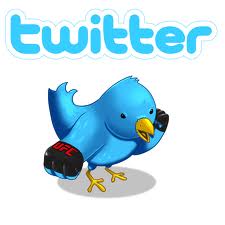 In many ways, Twitter and SMS marketing are the closest of media cousins. Both engage instantly using short blurbs rather than long-form content. Both rely on links and responses to deliver your full marketing message. Both provide instant feedback that lets you adjust your plan in real time. If your small business runs SMS marketing campaigns and maintains a Twitter account, consider taking on one or more of the habits below. If you use text messaging but don’t have a Twitter account, go get a Twitter account (it’s free) and start following these instructions. - Use a scheduling program like HootSuite or TweetDeck to broadcast most of your SMS messages on Twitter as well, timed so they come in at close to the same time.
- Only Tweet some of the deals you offer on a text broadcast. When you offer text-exclusive deals, Tweet with an announcement and an invitation to join your SMS subscriber list. Do the opposite as well, making Twitter-exclusive offers with a text invitation to follow your tweets.
- Make people famous by tweeting photos and other key responses to your SMS contests or polls. Get permission first, but most people will love seeing themselves “in print.”
- Share the love. If you see a particularly awesome tweet from somebody you follow, tell about it in your next SMS message.
- Use those hashtags. The symbol # before a word tells Twitter to file that tweet under the heading after the #. Thus #StarWarsBuyout will create a category about the recent George Lucas sale and include all tweets with that tag within the category. Whether you name it after your business or a specific product, own a hashtag and use it in both your tweets and your SMS messages that refer to Twitter.
- Hold a Twitter challenge by sending an SMS broadcast offering fabulous prizes to the Twitter follower who gets the most retweets of your material over the next 24 hours.
- Brainstorm tweet and text ideas in the same session, then link both channels thematically. This works especially well when calendar events put the same topics on everybody’s minds…such as summer heat or holiday shopping.
- Compile and analyze statistics for both forms of media. If one thing is working well on one, try it out on the other. If something seems to work on only one channel, look into why and make the best adjustments you can.
What about you, readers? What have you done to combine the forces of your Twitter and SMS campaigns? Tell us your success — or horror — stories below. When everybody shares, everybody wins.
Still not sold on the power of MMS marketing? A plus-size women’s clothing store in the US called Avenue has reported a 6,600% ROI from their MMS campaign. by sending MMS coupons and other promotional content every week. They also report to be receiving an open rate of 97% with their MMS marketing campaign.
As you can see above, shoppers were offered a $5 MMS coupon on their next purchase when joining the MMS campaign. Avenue also determined that 71% of their mobile subscribers used a smart phone. The campaign continues to grow at a rate of 30% month over month. Congrats Avenue on all the success of your MMS campaign, keep up the good work!
Social media marketing has a reputation for being an extremely complex advertising plan, but this is untrue. It is actually one of the easiest options out there and requires no fiscal investment. Using social media allows the business owner to interact on a more personal level with his or her audience and create a ripple through the internet. One simple video can turn into a plethora of traffic if the below advice is considered.
Never go on the defensive on social media sites. A poor review of your company on a website can seem like a personal assault on you and your business. You need to look at it objectively and resist the urge to publicly lash out at the negative review. Try to privately respond to any negative publicity and work it out that way.
Social media marketing is a great way to reach more customers and new customers. If you have a business which is located in New York City and your advertising is focused in the New York area, try experimenting with sending ad copy thought social media to New Jersey as well. That way you increase the reach of your company.
Always keep your cool when posting and replying on social media sites. There are people who will post on your social media pages with the intention of causing trouble. Maintain a professional attitude and just remove the posts. If they have a legitimate concern with your business, be respectful and always maintain a professional dialogue.
Get the competitive edge in social media marketing by using it to listen to your customers. Most businesses are bad at this, so if you truly listen to your customers and work to make change accordingly, you will be highly respected by those that matter most. Allow your customers to make suggestions and work to understand their concerns to increase your business.
If your social media marketing involves a Twitter account, automate certain kinds of content. If there are bloggers or news sources within your niche that you trust, and whose posts are consistently interesting, automate your account to retweet their posts. Also set up something where your best Tweets are periodically retweeted so they do not sink out of sight.
If you are looking to use Twitter as a social media marketing method, make sure that you choose a username that displays well and is easy to remember. This username should get the point of your company across, but should also be easy to remember. Don't choose usernames like TommyXo1009. No one will remember it and it is likely irrelevant to your company's name.
When working with social media marketing, you should always remember that you are speaking to individual people, and not the masses. The tone of your postings should be directed towards personal level for maximum success. It takes some practice to develop the right voice, but over time and with practice you will be able to communicate effectively.
Gaining traffic is important, but it is more important that they take the step from traffic to customer. This can only be done if you create quality media and target the correct audience. Do not waste time or money trying to market to the entire online world when simple planning and the above tips can save you both.
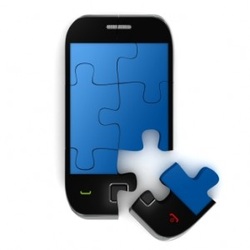 Given that nearly everyone on the planet who is old enough to be a potential customer of yours has a mobile phone, it is imperative that your business takes steps to mobilize now. If your customers haven’t already interacted with you on mobile, they will. Mobilizing simply means making it easy for your customers to interact with you via mobile and determining the best way to reach out to them via mobile with relevant information for them. Let me start with why the first two steps I am going to share with you are not optional. It is quite simply because the choice to interact via mobile is not in your control, it is literally in the hands of your customer. It is their decision whether to visit your website using their phone, tablet or their desktop computer. If they choose to use their phone and your site is not mobile friendly, then you lose. Same goes with checking email. If they happen to check email using mobile and your email is too big and bulky to be read easily on the small screen, then it is your email that is ignored. The choice of using mobile is theirs, not yours. Not optional, see what I mean? 3 Steps to Mobilize Your Business Now 1. MOBILIZE YOUR WEBSITE.Yes, you need to create a mobile version of your website even if you think that smartphones make mobile websites unnecessary. First of all, smartphones are not yet the majority of phones. In the US the smartphone adoption rate is only 35% as of the end of 2011. It is only 30% in Canada. (See Tomi Ahonen’s blog post about smartphone adoption rates for details.) If you do live somewhere where smartphone adoption is much higher, keep reading to see the second reason you need a mobile site. Secondly, even though smartphone browsers are, for the most part, powerful enough to serve up a desktop site it doesn’t mean that these desktop sites are easy enough to see and/or use on a mobile screen. It is always smart to give mobile visitors an experience that is customized to their mobile device and the choice to use the desktop version if they would rather. - Short paragraphs that make it easy to read
- The information that your visitors need when they are mobile (hours, location, etc.) prominently featured
- Small sized graphics that don’t take a long time to download
- Calls-to-action that work well on mobile (click-to-call, links that go to mobile commerce enabled pages, etc.)
- All of this powered by a mobile platform that detects when the visiting device is a mobile one and serves up the mobile site
BONUS STEP :If your business has a physical location that customers visit in person (as opposed to being an online only business, like mine) a very smart step in mobilizing your business is to create a robust Google Places listing. With Google having a reported 98.29% market share of mobile search, it is an absolute no-brainer to use their free business listing service that serves up mobile search results. 2. MAKE YOUR EMAIL MARKETING FRIENDLY.Quick poll: Do you ever check your email on your mobile phone? Yes, you do, I’m willing to bet on it. And so do your customers. Most of them probably do on a daily basis. Let me ask you this: what happens if the email you so carefully crafted and designed doesn’t even open on their phone? Or when it does it is unreadable? You know as well as I do that people don’t have time to read their email twice, much less once. So your one chance at getting your email read is to have it opened and read the first time it is encountered. The best way to make sure that happens is to send every email out as if it will be opened on mobile. A few tips about mobilizing your email: - Don’t send multiple column HTML emails filled with lots of graphics
- Instead, keep your email design simple. Consider following the principles of “skinny email” as written about here.
- Remember that any calls to action you have in email should also work on mobile.
3. BUILD AN OPT-IN SMS TEXT MESSAGING LIST.If you are seeking a way to reach past your customers’ crowded email in boxes using a mobile technology that provides relevant value in a hyper timely fashion, you need to look no further than text messaging. Building an opt-in SMS list at this point in time is analogous to beginning an email list in the mid 1990s. The businesses that did it first and did it well reaped great rewards. You have that chance right now. While email open rates plummet (ironically, even though we are all checking our email on mobile devices) SMS messages are seen instantly or nearly so. And because so few businesses have an SMS list built yet, you have the chance to be one of the few businesses with direct access to your customers wherever they are. Since I am so avidly against mobile spam in all its forms, I have to say that it is important that you fully understand that any text messaging you send to customers must be done with explicit permission. This is not the post to go into this in detail, just know that it is critical to stay completely above board with text messaging. A few thoughts about starting an SMS text messaging list: - The only way to build a list is to launch a campaign that your customers will opt into.
- You must entice them to sign up with a compelling offer – a reason to sign up: a special discount, something for free, information they can only get via mobile, etc.
- When sending out your text messages you want to include a strong call to action, something worth their time and attention and all the details they need to move forward.
Traditional means of advertising are yielding less benefits with the increasing success of social media efforts. Many business owners have found success with social media marketing. The following article can help you in your marketing venture.
Promote your special offers via social networks. People will want to like your Facebook page if they know this is a good way to have access to discounts. Your customers can learn more about you through social media, and you can contact them personally about your niche.
Make sure you create your image as an expert by helping others through the Internet. Having this kind of clout can help you bring in a lot more business. Search for relevant questions on social media websites and answer the people asking them. As time passes, this will attract customers you may not have found otherwise.
Professional etiquette is very important on social media sites. Be amiable and welcoming when you introduce yourself, but remain professional. Avoid arguing with your potential customers; delete any comments or posts that are spam or abusive in a non-constructive way. When interacting with friends, you should create a separate profile in your name.
Avoid using Twitter to post about subjects that are irrelevant to your product or industry. It could even, at worst, be classed as annoying spam, or filler content. If you're going to put these quotes, make sure they're original and your own.
Add a tag when posting on Twitter. You can find tags after the number signal (#). This way, any updates you make will show up in group subscriber feeds. Wisely choose the tags you use and keep an eye out for groups that you think your target audience will like.
Investigate the possibility of creating a Facebook game. It would be easy for you to create a game of your own that is related to your industry or your product. Several brands in the past have experienced overwhelming success by offering games on Facebook, some of which have gone viral very quickly. If it is within your budget, you can hire a professional video game developer to create your Facebook game.
When posting to a social networking site where you include pictures of your business, it is best to have many different photos instead of just the one logo. People like knowing the real person who is behind a business. It is a great idea to showcase photos of business events on your social media pages.
Maintain a current and relevant blog. Post any sale or promotion you may be having to your blog. Also post updates containing information about vital news, such as changes in your operating hours, closings and new locations opening up. See to it that all of this gets posted to your blog.
Now that you have some solid tips on the subject, you should be able to see the finish line. The above article has provided you with what you need to use social media marketing properly. It is very cheap or free to use SMM to market your business online Now that you know about the effectiveness of social media marketing, you would be remiss in not getting started right now.
What has email got to do with website conversion?
“WTF?” – That’s most people’s first reaction when I try and explain how important email can be for site conversion. But if you think about it logically; email is a great touchpoint for communicating with your existing customers and registrants (those that traditionally have higher conversion rates), so it makes sense that if you can maximise the impact of these visitors you can positively influence online conversion.
Ultimately, deployed at the right touchpoints, email enables you to continue user journeys even when the user is not on your site. Below is a simple flow chart showing how email can aid specific user journeys to increase conversion.
Whenever people talk about the elements of conversion rate optimisation (CRO) they mention MVT (or testing in general), analytics, usability, user experience (UX), databases, recommendation engines, personalisation etc…
"What these all have in common is understanding online user behaviour and using this information to improve the online customer journey in order to increase conversion. Email should be no different."
- Let’s end at the beginning – email creative
The email creative is the first interaction a user has with your site when they are coming back via this form of communication, so you need to treat it with the same thought as you would any landing page.
The critical thing that people too often forget about this is how the user journey will flow from the email. Too often people don’t even consider a landing page for an email and instead drive people to the most convenient page on the website. Even those that do push you to a dedicated landing page often do not give enough thought to how the creative will tie in with the landing page(s). As email is controlled by a customer database, you will already have access to a heap of information regarding online user behaviour. Using this information and making email part of the user journey will help drive more users to your site and increase conversion opportunities.
Tips for ensuring targeted email gives targeted trafficIt’s nothing new to users of this website when I say the better quality of traffic you have, the better your site conversion will be, so hopefully most people can put two and two together and realise that the more you target your emails the better quality of traffic you will be sending through to your site.
If you segment your emails so you are driving the right people at the right time through to the right content, you have a much higher chance of getting those people to convert on site compared to a blanket weekly mass mailing (that is unfortunately still too often the fall back of ecommerce companies). As always these things are best illustrated with an example comparing a good and bad company at emailing.
Let’s start with segmentation. In our example we are looking at a list of 100,000. Our bad company is mailing one email to all 100,000 subscribers with no form of segmentation overlaid. Everyone will get the same email.
Our good company has split its subscriber list 5 ways based on both user engagement and recent transactional history. In addition to this, with no segmentation our bad company is sending the same creative to all 100,000 people, but our good company is using dynamic content to amend certain elements of the creative depending on what segment the email is being sent to.
"All in all this clever use of segmentation to provide segmented creative and content is going to enable the good company to start a journey for each prospect in a far more targeted manner."
Our good company is now engaging with the customer in relation to how the customer/user has previously engaged with the brand. Making the introduction of email part of an existing journey greatly improves the chances of getting the customer to the website. In addition to this preparing an appropriate landing page to continue the journey from email to site makes it far more likely the visit will end in a conversion.
- Triggers that change site behaviour
This concept of targeting is taken to its extreme when you consider the power of behavioural emails and how they essentially come directly from a user journey.
Consider classic behavioural emails like basket abandonment, welcome programmes and browser re-engagement., They all come down to spotting a user’s behaviour (customer journey), which triggers an email brand communication to encourage the user back on to the site (returning to the online customer journey). "If you think of behavioural emails as continuing the user journey, but just over multiple sessions rather than within a single visit, you see the power they provide for site conversion."
- Let’s end at the beginning – email creative
The email creative is the first interaction a user has with your site when they are coming back via this form of communication, so you need to treat it with the same thought as you would any landing page.
The critical thing that people too often forget about this is how the user journey will flow from the email. Too often people don’t even consider a landing page for an email and instead drive people to the most convenient page on the website. Even those that do push you to a dedicated landing page often do not give enough thought to how the creative will tie in with the landing page(s)."It’s vital email creative is tied to the goals of the email. Ultimately this will be some form of action on the website, resulting from a customer journey."
This means your creative agency (in house or outsourced) really needs to be close to the website and understand how user journeys work; what messages in the email will mesh with the onsite journey we are sending the user on? It’s critical any designer/creator understands the journey we are expecting the user to take in exactly the same detail as someone optimising website pages based on the online user journey.
- Let’s work together – integrated marketing
The main conclusion? It’s one I’ve made previously in relation to other topics – email should never be a stand-alone field. This is not just associating it to all other marketing, but closely linking it to the website.
Too often what is done within email is not linked to how the website is working, when in reality there should be closer ties between your email service and your online business than any other marketing tool. "Compared to other forms of marketing, email has the highest percentage of users that have already seen your site, so it’s vital that the way you communicate with them reflects this knowledge."
After all, email subscribers are the people who are so ‘into’ your products they have requested you send them information on what you do.
While you may have a separate team working on email, to those working on the website, to your customer every type of communication put out there is coming from the same place. They brand the love.. to the customer, each individual visit builds a relationship. The more you can do to recognise this relationship and support it, the more likely you are to increase conversion.
|


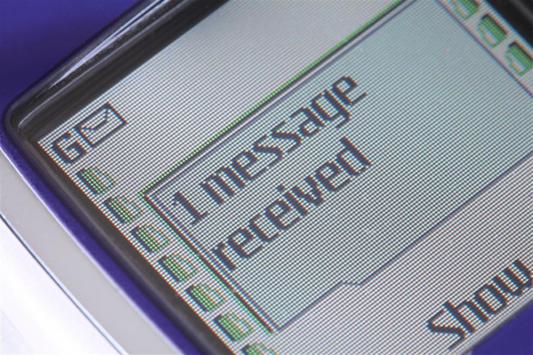


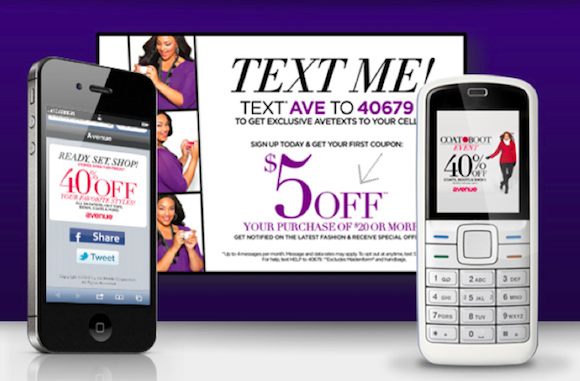



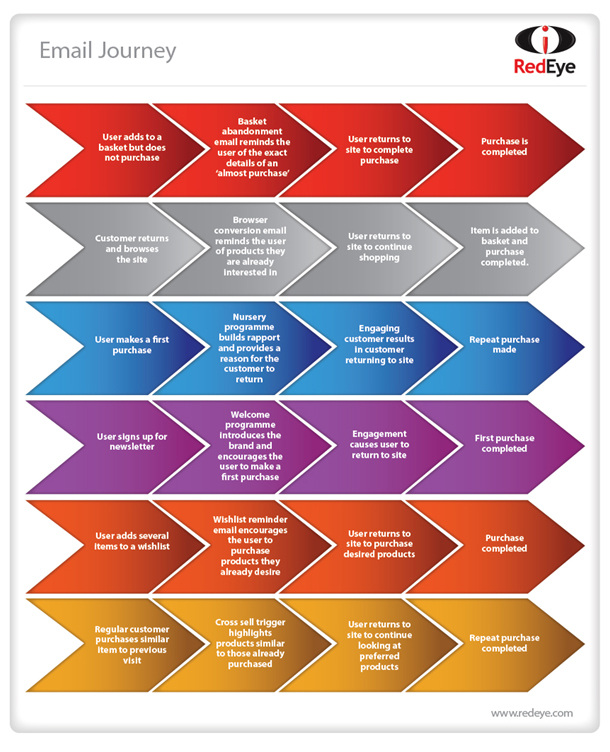

 RSS Feed
RSS Feed